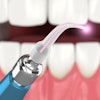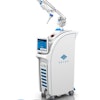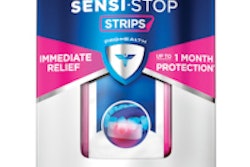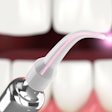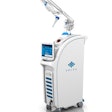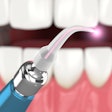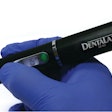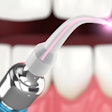
People with dentin hypersensitivity (DH) are constantly reminded of it during the course of normal activities, such as eating and drinking. Previous studies have provided evidence that this sensitivity can be treated with lasers. Now, Korean researchers have tested a simple concept: attaching a laser to a toothbrush to see if it can help reduce DH.
As laser technology has improved, the potential applications for it have broadened. It can safely be incorporated into battery-powered, handheld devices, and the researchers used that opportunity to create a device that emits a low-level laser and serves as a toothbrush (Journal of Oral Rehabilitation, July 2014, Vol. 41:7, pp. 523-531). The prospective, double-blind, randomized, controlled trial is the first to examine the ability of low-level laser therapy delivered for DH with visible diode lasers.
After comparing it to a control toothbrush in patients with DH, the group found that the laser toothbrush was safe and effective.
"It was concluded that the use of the low-level laser-emitting toothbrush is a safe and effective treatment option for the management of DH," wrote the researchers, who are from different dental departments at the Catholic University of Korea's medical school.
“The daily application of a low-level laser may be a more feasible method compared with treatment at a clinic.”
The toothbrush used in the trial emits red (635 nm) light in the visible spectrum with an AA battery-powered diode laser with an output of 6 mW. The researchers sought to find out if it would effectively decrease pain sensitivity scores for DH after four weeks of use compared with a control group. Ninety-six physically healthy people between the ages of 20 and 65 who described DH symptoms but did not have caries, tooth fractures, periodontitis, gingivitis, or restorations participated in the study.
For four weeks, 48 of the participants used the experimental toothbrush while another 48 participants used a control LED toothbrush (wavelength of 635 nm). The researchers used a three-way syringe to apply a short blast of air 3 mm away from the tooth with DH to ascertain pain responses (based on a visual analogue scale [VAS] from 0-10). They also used an electric pulp test and took a plaque index. This information was recorded at the initial visit, after two weeks, and at the completion of the four-week period.
During the study period, the participants were instructed to switch on their LED or laser on the toothbrush and irradiate the tooth for 55 seconds. The light blinked five times once the 55-second time period was up. The patients then brushed their teeth with fluoride toothpaste for two minutes; after that time, the light blinked three times. After rinsing, they brushed for two more minutes without dentifrice. Overall, the laser or LED light was on for five minutes.
The elaborate brushing procedure was designed in part to account for the placebo effect. The subjects were instructed to brush three times a day and to keep a log of their brushing habits. If participants didn't adhere to at least 70% of the prescribed brushing regimen, they weren't included in the results. Forty-two participants completed the trial in the test group, while 44 finished in the control group.
There were no significant differences between the VAS scores at the two- and four-week mark in the control group; however, the VAS scores steadily declined in the test group (p < 0.05). VAS scores declined from the initial reading to the final one in both groups, but the change was significantly greater in the test group (p < 0.05).
Overall, the pain intensity scores declined in both groups, but there were no significant differences between the two. There were no significant differences in the electric pulp test score changes either. These results help confirm the effect that the laser toothbrush had on DH, the researchers explained. They're also optimistic about its potential for widespread home use.
"The daily application of a low-level laser may be a more feasible method compared with treatment at a clinic," they wrote. "The use of a low-level laser toothbrush was effective in decreasing DH."
